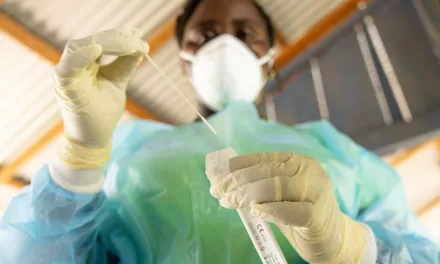New Delhi, February 1, 2025: The Union Budget 2025 has sparked mixed reactions within the medical fraternity following Finance Minister Nirmala Sitharaman’s announcement of a significant expansion in medical seats and the establishment of cancer care facilities. While the initiative is seen as a step forward, experts and medical professionals highlight critical gaps in infrastructure, faculty availability, employment, and security provisions for doctors.
More Seats, but Infrastructure Concerns Persist
The government revealed that medical education in India has seen a 130% increase in seats over the past decade, with an additional 1.1 lakh undergraduate (UG) and postgraduate (PG) seats. Further expansion plans include 10,000 more medical seats in 2025-26 and a target of 75,000 new seats over the next five years.
However, medical professionals argue that this expansion lacks the requisite infrastructure and faculty support.
Dr. Dhruv Chauhan, a prominent medical activist, voiced concerns over the feasibility of such an increase without addressing existing deficiencies in medical institutions. “Students in peripheral areas frequently complain about faculty shortages and inadequate facilities. Expanding medical education without fixing the broken infrastructure is a recipe for disaster,” he stated.
Dr. Chauhan also warned that MBBS graduates could face employment struggles similar to engineering graduates. “Without job creation, increasing seats alone is futile. We risk creating a surplus of doctors without opportunities, leading to an employment crisis in the medical sector,” he added.
Employment Woes for Future Doctors
Echoing these concerns, Dr. Dilip Bhanushali, National President of the Indian Medical Association (IMA), questioned the government’s planning. “With 1.1 lakh medical graduates entering the system, where are the employment opportunities? The government has not provided clear solutions for job creation,” he remarked.
Dr. Suvrankar Datta, National President of the Federation of All India Medical Association (FAIMA), underscored the importance of increasing PG seats and faculty recruitment. “Expanding UG seats without addressing the need for specialized doctors is shortsighted. The focus should be on creating more PG seats and strengthening hospital positions to ensure qualified specialists enter the healthcare system,” he suggested.
Budget Allocation Falls Short of Expectations
Despite the ambitious announcements, the budget allocation for healthcare remains underwhelming. The IMA has consistently advocated for an increase in healthcare spending to at least 5% of the Gross Domestic Product (GDP). However, the government has yet to meet even its own 2.5% target, with current healthcare spending still below 2%.
Dr. Bhanushali expressed disappointment over this shortfall, stating, “This allocation is insufficient. The government should have prioritized improving existing healthcare infrastructure rather than focusing solely on increasing seats.”
Furthermore, concerns were raised about the inefficiencies in medical education governance bodies, such as the National Medical Commission (NMC), National Testing Agency (NTA), and National Board of Examinations in Medical Sciences (NBEMS). Dr. Chauhan criticized their operational inefficiencies, stating, “These bodies struggle to conduct a single exam without controversies. How can we expect systemic improvements when basic governance is lacking?”
Security Concerns Overlooked
A major disappointment in the budget was the lack of mention of security measures for doctors. Following the shocking rape and murder case at RG Kar Medical College, medical professionals have been demanding stronger security measures, but the budget offered no concrete steps in this regard.
Dr. Datta condemned this oversight, saying, “The government formed a National Task Force (NTF) and claimed it was committed to doctors’ safety, yet there are no concrete provisions in the budget to ensure their protection, particularly in rural areas.”
A Silver Lining: Expansion of Cancer Care Facilities
Amid the criticism, the announcement of new cancer care centres has been widely welcomed. The government has pledged to establish 200 new cancer daycare and treatment centres in district hospitals in 2025-26, with plans for further expansion.
Dr. Bhanushali lauded this initiative, saying, “India faces a high cancer burden, and these centres will play a crucial role in early detection and treatment.” Dr. Chauhan also supported the move but emphasized the need for robust healthcare infrastructure to ensure its success.
Final Verdict: A Mixed Bag
While the Union Budget 2025 sets ambitious targets for medical education and healthcare, its execution remains a pressing concern. Without necessary infrastructure, faculty, employment opportunities, and security measures, the expansion of medical seats could lead to more challenges than benefits.
Disclaimer: This article is based on expert opinions and publicly available budget announcements. The views expressed by medical professionals are their own and do not necessarily reflect those of this publication. Readers are advised to verify details from official government sources before forming conclusions.












